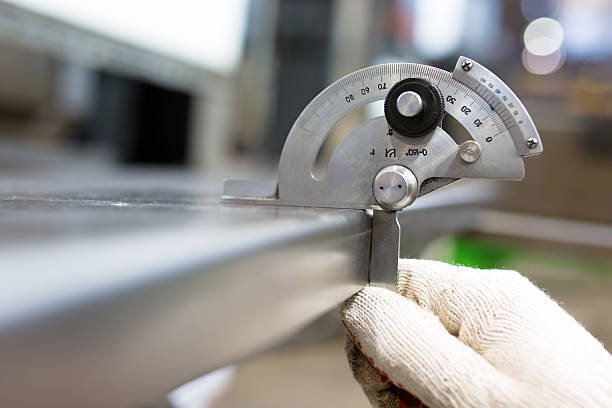On this page, we name four professions where people use protractors.
The protractor is a simple but essential tool used to measure angles or to draw angles. Its semi-circle shape, usually with degrees marked from 0 to 180, has found utility in various professions. This tool is not limited to the classroom environment, but it significantly influences real-world applications.
Four Professions That Use Protractors
Let’s explore four professions where protractors play a crucial role.
- Architects: Architects utilize protractors to draft detailed building plans. The protractor helps them to outline precise angles when designing floor plans, elevations, or sections of buildings. Architects often deal with complex geometric forms, and accuracy in drafting these shapes is crucial to the successful construction of the structures they design.
- Engineers: Various branches of engineering require the use of protractors. Mechanical engineers, for instance, use them to design parts of machines and vehicles, ensuring each piece fits together perfectly. Civil engineers might use protractors for road design or building construction, to create accurate angles for slopes, bends, and intersections.
- Surveyors: Surveyors also utilize protractors, particularly when mapping land or property boundaries. This tool allows them to measure and mark out specific angles accurately, which is crucial for determining property lines, planning construction projects, or even establishing legal boundaries for land disputes.
- Navigators: In professions related to navigation, such as maritime or aviation occupations, protractors are used to plot courses on maps. Navigators use this tool to find the correct angle or direction from one point to another, ensuring safe and efficient travel.
Protractors are versatile tools that facilitate precision and accuracy in numerous fields. Whether it’s a complex engineering project, a detailed architectural blueprint, accurate land surveying, or precise navigation, the protractor proves to be an invaluable tool in these professions.
FACTS about Protractors
1. Early Origins: The first known protractors date back to the 17th century, and they were used by astronomers to measure celestial angles. However, the concept of measuring angles predates the protractor by centuries, as early astronomers in ancient cultures such as the Greeks, Egyptians, and Chinese used crude forms of angle measuring tools to study the heavens.
2. Brass Protractors: Before the advent of plastic manufacturing, protractors were commonly made from brass or steel. These earlier versions were often beautifully crafted and sometimes elaborately decorated, reflecting the artisanal skill of the era.
3. Half-Circle and Full-Circle Protractors: The protractor we are most familiar with is the half-circle, or semicircular, protractor, which measures angles up to 180 degrees. However, there are also full-circle protractors, which are 360 degrees. These are often used in fields such as astronomy and navigation where complete rotation is necessary to understand.
4. Invention of the Rectangular Protractor: The rectangular protractor, also known as a ‘square head’ protractor, was patented by Joseph H. Walker in 1878. This tool is essentially a right-angled, flat piece of metal or plastic with a protractor on one end. It’s useful for drawing perpendicular lines and angles on flat surfaces, commonly used by engineers and architects.
5. Military Usage of Protractors: Protractors have had unique applications in military contexts, particularly in artillery and navigation. Miliary protractors often have special scales or additional features to facilitate their specific uses. One example is the artillery protractor, used for adjusting artillery guns to specific angles for accurate shelling. Similarly, navigational protractors, like the aviation plotter, are used to plot courses on aeronautical charts.
These historic and unique facts underscore the diversity of protractor applications over time and across different fields, far beyond its common usage in a school geometry class.

